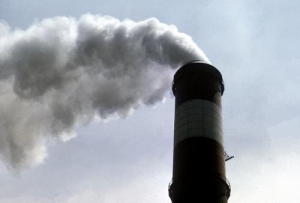Water pollution: an introduction
over two-thirds of Earth's surface is covered by water; less than a third is taken up by land. As Earth's population continues to grow, people are putting ever-increasing pressure on the planet's water resources. In a sense, our oceans, rivers, and other inland waters are being "squeezed" by human activities—not so they take up less room, but so their quality is reduced. Poorer water quality means water pollution
What is water pollution?
Usually, it means one or more substances have built up in water to such an extent that they cause problems for animals or people. Oceans, lakes, rivers, and other inland waters can naturally clean up a certain amount of pollution by dispersing it harmlessly
water pollution is all about quantities: how much of a polluting substance is released and how big a volume of water it is released into. A small quantity of a toxic chemical may have little impact if it is spilled into the ocean from a ship. But the same amount of the same chemical can have a much bigger impact pumped into a lake or river
The introduction by man, directly or indirectly, of substances or energy into the marine environment (including estuaries) resulting in such deleterious effects as harm to living resources, hazards to human health, hindrance to marine activities, including fishing, impairment of quality for use of sea water and reduction of amenities.
What are the main types of water pollution?
When we think of Earth's water resources, we think of huge oceans, lakes, and rivers. Water resources like these are called surface waters. The most obvious type of water pollution affects surface waters.
Not all of Earth's water sits on its surface, however. A great deal of water is held in underground rock structures known as aquifers, which we cannot see and seldom think about. Water stored underground in aquifers is known as groundwater. Aquifers feed our rivers and supply much of our drinking water. They too can become polluted,
Point-source pollution comes from a single, well-defined place such as this pipe. Below: Nonpoint-source pollution comes from many sources. All the industrial plants alongside a river and the ships that service them may be polluting the river collectively.
Sometimes pollution that enters the environment in one place has an effect hundreds or even thousands of miles away. This is known as transboundary pollution
How do we know when water is polluted?
There are two main ways of measuring the quality of water. One is to take samples of the water and measure the concentrations of different chemicals Measurements like this are known as chemical indicators of water
Another way to measure water quality involves examining the fish, insects, and other invertebrates that the water will support. If many different types of creatures can live in a river, the quality is likely to be very good; if the river supports no fish life at all, the quality is obviously much poorer. Measurements like this are called biological indicators of water quality,
What are the causes of water pollution?
Most water pollution doesn't begin in the water itself. pollution enters our seas from land the Virtually any human activity can have an effect on the quality of our water environment. When farmers fertilize the fields, the chemicals they use are gradually washed by rain into the groundwater or surface waters nearby. Sometimes the causes of water pollution are quite surprising. Chemicals released by smokestacks (chimneys) can enter the atmosphere and then fall back to earth as rain, entering seas, rivers, and lakes and causing water pollution. That's called atmospheric deposition. Water pollution has many different causes and this is one of the reasons why it is such a difficult problem to solve.






0 Comments